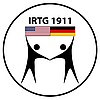B3 (2013 - 2016) – Immunomodulatory roles of cytosolic components and extracellular particles in Leishmania infection and Sepsis
Natalia successfully defended her thesis in April 2017!
Publications:
1: Johnson BL 3rd, Midura EF, Prakash PS, Rice TC, Kunz N, Kalies K, Caldwell CC. Neutrophil derived microparticles increase mortality and the counter-inflammatory response in a murine model of sepsis. Biochim Biophys Acta. 2017 Jan 17. pii:S0925-4439(17)30017-0. doi: 10.1016/j.bbadis.2017.01.012. [Epub ahead of print]PubMed PMID: 28108420.
2: Milićević NM, Schmidt F, Kunz N, Kalies K, Milićević Ž, Schlosser A, Holmskov U, Sorensen GL, Westermann J. The role of microfibrillar-associated protein 4 (MFAP4) in the formation and function of splenic compartments during embryonicand adult life. Cell Tissue Res. 2016 Jul;365(1):135-45. PubMed PMID: 26899386.
2: Midura EF, Prakash PS, Johnson BL 3rd, Rice TC, Kunz N, Caldwell CC. Impact of caspase-8 and PKA in regulating neutrophil-derived microparticle generation. Biochem Biophys Res Commun. 2016 Jan 22;469(4):917-22. PubMed PMID: 26707875.
3: Stamm C, Barthelmann J, Kunz N, Toellner KM, Westermann J, Kalies K. Dose-dependent induction of murine Th1/Th2 responses to sheep red blood cells occurs in two steps: antigen presentation during second encounter is decisive. PLoS One. 2013 Jun 28;8(6):e67746. PubMed PMID: 23840769.
Project:
Cell-derived particles such as exosomes, microparticles and apopototic blebs have emerged as important mediators of intercellular communication. In addition, intracellular cytosolic content when released into the extracellular space can modulate activities of surrounding cells. To test whether cytosolic components have immunomodulatory capacities, we prepared membrane-free Protein-Nucleic-Acid-Complexes (PNACs) from cytosol of cultured cells and used them in Leishmania major (L. major) model. We found that injection of PNACs during infection with L. major altered the production of L. major specific IgGs from IgG2 to IgG1. Apparently, cytosolic components are recognized by immune cells and shift the immune response towards Th2. The Caldwell lab has a strong expertise in microparticles and demonstrated that microparticles are released during sepsis from activated neutrophils in a TNFa dependent manner. In a collaborative effort between the Caldwell and the Kalies lab, we found in preliminary studies that microparticles and PNACs are similar in size (between 100 and 200 nm) but differ in their molecular composition. Whereas PNACs contain Annexin V and lack a lipid layer, microparticles are surrounded by a phosphatidylserine positive membrane. In addition, we could show that PNACs decelerated bacterial clearance during sepsis. Here, we aim to investigate the effect of cytosolic membrane-free components and cell derived membrane-containing microparticles during L. major infection and sepsis.
Aims:
1.Prepare membrane-free cytosolic components, Protein-Nucleic-Acid-Complexes and membrane-surrounding microparticles and identify their molecular composition
2.Define their effects on phagocytosis, activation, apoptosis and ROS release on immune cells in vitro
3.Delineate the impact of membrane-free cytosolic components, PNACs and microparticles in vivo on the immune response to L. major and the course of sepsis







